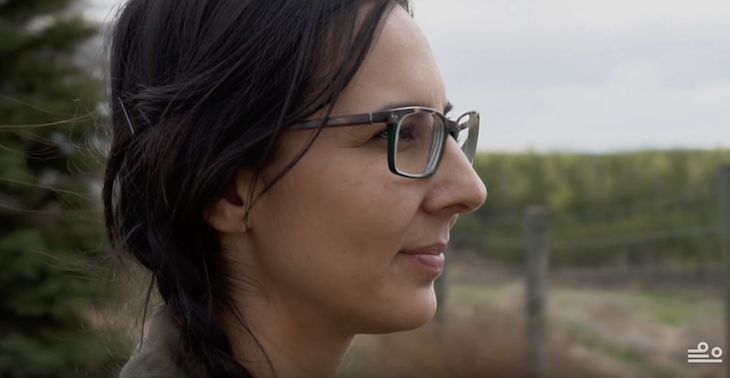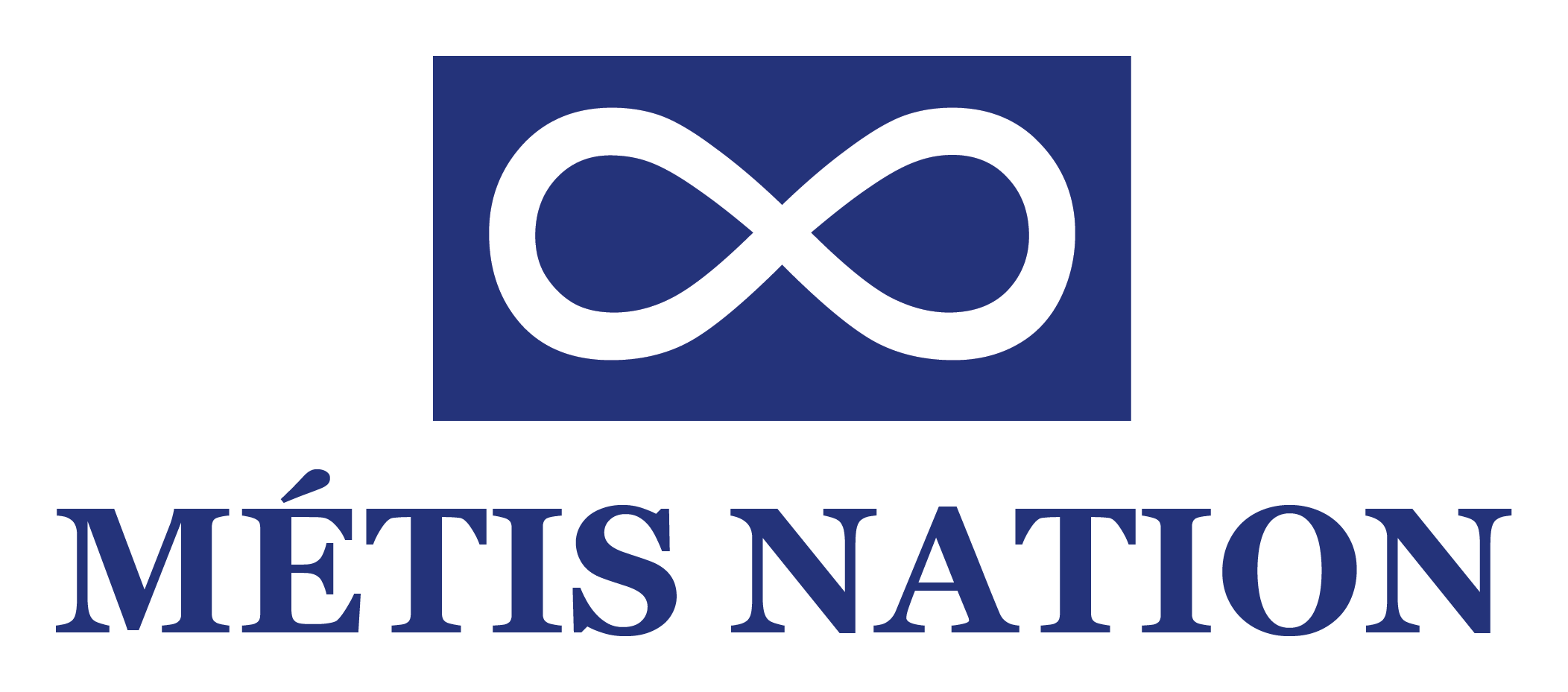
Since time immemorial, Indigenous peoples have respectfully lived with the natural world, and have a deep connection to the land, water, and ecosystems that are central to their cultures, languages, and livelihoods. Through this intergenerational experience and observation, Indigenous peoples were amongst the first to notice climate change and also have critical knowledges for navigating and adapting to it.
“Climate change is one of the biggest challenges that we're faced with today…” says internationally-renowned Inuk author and advocate Siila Watt-Cloutier. “For 20 years, many of us – including myself – have been signalling the urgency of this matter. And it's time, it's well over time, to act on these issues.”
Through the advocacy of Siila Watt-Cloutier and other Indigenous leaders, in collaboration with scientists, the world began to take notice.[1] It is often said that Indigenous peoples are on the frontlines of climate change, because they are disproportionately affected by it, and yet contribute relatively little to the problem.
The Indigenous communities in the country, known as Canada, include diverse Inuit, First Nations, and Métis peoples, which are deeply connected to their lands, waters, and territories from coast to coast to coast. And they are seeing many changes.
A world out of balance
From extreme weather, coastal erosion and the loss of sea ice to biodiversity and water quality decline, climate impacts and associated cultural change are part of the lived reality of Indigenous communities.
Terry Teegee describes these changes as a “world out of balance.” Teegee, the Regional Chief of the British Columbia Assembly of First Nations, has seen climate impacts intensified by unsustainable forestry practices and disregard for traditional Indigenous knowledge about forest ecosystems.
In this video, “World out of Balance,” Terry Teegee talks about climate change and forest management in his territory on the west coast.
Elders, Knowledge Keepers and community members from coast to coast to coast have echoed this sentiment that climate change is the result of an imbalance. Not only an imbalance within the environment, but a deeper imbalance within ourselves and mainstream societal values and behaviours.[2] (For more, read our article on the Onjisay Aki Initiative on Climate Change)
Read More: Inuit perspectives from a changing Arctic
“As Inuit, we rely on the cold, the ice, and snow. That is our life force up there,” says Siila Watt-Cloutier. “To a world that relies on that cold to survive and thrive, for us it's about transportation and mobility… safety, security, education, health.”
Watt-Cloutier describes how the loss of the cold is dramatically impacting the entire way of life of her people, even though they are far removed from the sources of greenhouse gases that are driving climate change. As she says, “this isn't just an environmental issue, per se… For us, it is our right to be cold.”[1]
Inuk Advocate and Author Siila Watt-Cloutier talks about the impacts of the loss of cold in the Arctic on her community’s way of life.
Read more community stories of change in the Arctic in our Youth Perspectives on Climate Change in Pangnirtung article.
How colonialism has caused climate change
Climate change is often understood as an “environmental” issue. But many Indigenous leaders are saying that the root problem of climate change is colonialism.
Western powers have shaped Canadian society around a particular worldview and set of values, which are different from those held by many Indigenous peoples. This western worldview disrupts people’s connection to the natural world – viewing ecosystems simply as “resources” – which can be owned and controlled.[3][4]
As a result, mainstream society and its carbon-intensive economies continually demand an endless supply of resources, which are often extracted from Indigenous peoples’ ancestral lands.[5][6] The dispossession of Indigenous peoples from their lands is, therefore, intertwined with the dominant economic paradigm that contributes to climate change.[7]
For example, the Lubicon Cree Nation’s traditional territory is in the heart of the oil sands region of northern Alberta, and were displaced for economic development. Chief Billy-Joe Laboucan describes how colonial government legislation took their lands to make way for industry: “With a lot of the different laws like the Natural Resources Transfer Act of 1930, they just more or less took over our lands and resources.”
Colonialism severed Indigenous connection to land and culture that is central to Indigenous identity, spirituality, and resilience.[8] Climate change exacerbates these pre-existing social, cultural, and environmental changes brought about by colonialism that Indigenous communities have been enduring and adapting to for centuries.[6]
Despite these challenges, Indigenous peoples, communities, and governments across the country have been actively asserting their rights and reconnecting to their land and cultures. Indeed, Indigenous Elders and Knowledge Keepers are sharing traditional values, insights, and languages that contribute to Indigenous-led resurgence, resilience, and research on climate solutions.[2]
Indigenous ways of knowing are shaping climate solutions
Indigenous knowledge carries ancient and intergenerational wisdom[9][10] that is flexible, fluid, and adaptive as it evolves through relationships with the land and other beings.[11] This knowledge evolves from and is responsive to the natural world, which makes it ideal for developing and advancing meaningful climate solutions.
Walter Andreef, Métis knowledge keeper and scientist, spends a lot of his time in the bush. “I feel that when I'm in the forest – the boreal forest where it's deep and dark, with all kinds of animals, and bountiful with life – I feel very much at home,” Andreef explains. “It's kind of a place where you feel connected to the land, just as you are in yourself.”
Indigenous knowledge is not uniform across the diversity of Indigenous peoples in Canada, and cannot be separated from the people who hold it. It is embodied.
At the same time, there are some common principles across these knowledge systems[11][13] which some suggest are important in the context of addressing climate change.[12] For example, the concepts of relationality and stewardship carry teachings that all living things are interconnected and therefore must be respected and cared for.
“Traditional knowledge for us is certainly about how we can survive the odds in harsh environments, the wisdom of all of that has sustained us for millennia…” describes Watt-Cloutier. “What we're trying to teach is that traditional knowledge is not just for Indigenous people, it's for everybody… All you have to do, really, is start to respect and understand traditional knowledge of Indigenous peoples and you will see there will be a groundswell of new creative and innovative ways and means in which to address these challenges that we face today in the world.”
In the most general sense, Indigenous knowledge systems can offer a more holistic approach, that may compliment the disciplinary nature of western sciences.[13]
Blackfoot Knowledge Keeper and scholar Leroy Little Bear says that we must move beyond the either/or mentality of western thought: “We're not talking about either Western science or native science. What we're talking about is a marriage of the two, because that'll bring about enrichment. That's what we refer to as a holistic approach.”
Read More: Collaborative research on climate change bridging cultures
In recent decades there has been an increase in collaborations between researchers and Indigenous communities in Canada on documenting impacts and responses to climate change and co-producing knowledge to inform policy and community-based solutions.
As researchers at the Prairie Climate Centre, we work with communities to bring together western science and Indigenous knowledge in research and communication on climate change. We have partnerships with Knowledge Keepers and communities from coast to coast to coast to support their existing work on climate change, help to document and mobilize their perspectives and knowledges, and offer our knowledge of climate science where it can be helpful.
We have brought stories of this work together here on the Climate Atlas with direction from our Indigenous partners and advisors, in the spirit of weaving together Indigenous and western knowledges to address complex challenges.
With awareness of the colonial dynamics of academic research in this context and the history of co-optation of Indigenous knowledge[13][14], we strive to do things differently in this work. At the root of these collaborations are long-term, respectful and reciprocal relationships. These relationships allow trust to be built, and community leadership to guide the processes.
Led by our Indigenous partners, we are evolving new ways of respectfully working across different worldviews. Within this, we aim to honour Indigenous scholars’ and communities’ calls to move away from understanding Indigenous knowledge as exclusively ‘local’ and more meaningfully engage with the philosophies and epistemologies at its foundation.[15][16] In practice, this means spending time together in ceremony, on the land, and in sacred lodges, under the guidance of our collaborators.
Seven generation solutions
While communities across the country are being impacted by cumulative effects of climate change and other colonial stressors, many are creating pathways forward with solutions that further social and environmental well-being and self-determination for generations to come.
Guided by their traditional teachings of intergenerational equity and respect, Indigenous communities are “building an economics for the seventh generation”.[17]
Through diverse community-led actions – such as community-owned renewable energy projects, land-based education initiatives, cross-cultural climate conversations, language revitalization programs, and ceremony – communities are reconnecting with their traditional knowledges, cultures, spiritualities, and lands, and leading solutions with broader benefits for the earth and humanity.
For example, in 2012 the small community of Montana First Nation in southern Alberta founded Green Arrow Corp. Akamihk, western Canada’s first Indigenous-owned and -operated community solar energy company.[18] “You hire your own people, by your people, for your people,” explains Vickie Wetchie, Montana First Nation member and General Manager of Green Arrow. “We can do this for ourselves, we understand these types of businesses.”
Montana First Nation is among over 200 Indigenous communities across the country that are pursuing renewable energy development as ways to strengthen sovereignty and cultural connections to land, mitigate climate change and environmental damages, provide decentralized energy, and support local economies.[19]
Video: Montana First Nation’s band office has a 100kW solar system, installed by their community-owned solar energy company, Green Arrow Corp. Akamihk.
Indigenous peoples are also organizing across communities and geographies to create more sustainable futures for their communities. For example, Indigenous Climate Actionis an Indigenous-led climate change coalition with members across the country, that has a variety of programs aimed to build knowledge and awareness of climate change and its interconnections with Indigenous rights and sovereignty.[20]
For Eriel Deranger, founder of Indigenous Climate Action, climate solutions must be rooted in decolonization. “I think that real climate solutions are not caught up in maintaining the status quo of capitalism, of colonialism. And that real climate solutions are rooted in a return to the land, a return to and of the land, and are rooted in decolonization,” says Deranger. “Real climate solutions are decolonial climate solutions, because they're taking us back to reconnections with the land, to being on the land, to reconnecting with that intimate understanding of how to not just live and survive on the land, but how to adapt and change with it.”[21]


Eriel Deranger of the Athabasca Chipewyan First Nation (left) and Mi’kmaq Water Protector Michelle Paul (right)
On the East Coast, Mi’kmaq Water Protector Michelle Paul believes that grassroots action is key to addressing climate change: “It's people power that's going to effectively make the change and make the transition into cleaner energy and a better mindset of how to share these resources and how to be stewards of the land.”
Read More: Prophecy and Indigenous leadership on climate change
Many Indigenous prophecies foretold of this time of climate change. They talk about Indigenous communities bringing forward their knowledges to provide guidance to all people on how to live in relationship with the earth and with each other.
“It was prophesized that we would reach a point in our history where we would have to teach the settler population essentially how to be human,” says Mi’kmaq Water Protector Michelle Paul. “What that means. How to cohabitate, how to share and learn and grow from each other.”
The Anishinaabeg Seven Fires Prophecy foretold of the current time of the Seventh Fire. It says that amidst great challenges and changes in the world, the Oshkimaadiziig (“new people”) would emerge to revive the languages, philosophies, traditions, and ways of being and knowing that colonial systems tried to destroy.[22] Winona LaDuke describes this time of the Seventh Fire as a crossroads, with a choice between one path well-worn and scorched and the other new and green; choosing the green path is “the work of restoring Indigenous ways of living and land-based economics for the seventh generation.”[22]
Another example of this collaboration is the Indigenous Climate Hub, an online platform where communities can share their stories and experiences of climate change. They’ve also compiled a library of resources and tools to support communities in adapting and responding to change.[23]
Indigenous self-determination is key to climate action
If we begin to understand climate change as a result of colonial systems, then Indigenous self-determination is a critical part of climate solutions.
Many of the pathways that communities are pursuing in relation to climate change are contributing to processes of self-determination. For example, community members explained that Montana First Nation’s community-owned solar company increases their energy sovereignty and self-sufficiency through local employment, provides savings on power which are reinvested into social programs and infrastructure, and lessen their environmental impacts simultaneously.
Indigenous-led solutions can not only further communities’ self-determination, but simultaneously inspire a broader societal shift which is needed to address climate change.
Across the country, many people have echoed a similar sentiment: it is not only a technological shift that is necessary to address climate change, but a deep shift in our social and ecological priorities.
Now we have both an opportunity and a responsibility to pursue climate action through true nation-to-nation relationships. In respecting Indigenous leadership on climate, Canadians can begin to learn how to honour their Treaty responsibilities, to share in the stewardship of our collective home.
References
- Watt-Cloutier, S. (2015). The right to be cold: one woman's story of protecting her culture, the Arctic and the whole planet. Penguin Canada.
- Cameron, L., Courchene, D., Ijaz, S. et al. ‘A change of heart’: Indigenous perspectives from the Onjisay Aki Summit on climate change. Climatic Change 164, 43 (2021). https://doi.org/10.1007/s10584-021-03000-8
- Alfred, T. (2005). Wasáse: Indigenous Pathways of Action and Freedom. Peterborough, ON: Broadview Press.
- Corntassel, J., & Bryce, C. (2012). Practicing Sustainable Indigenous Approaches to Cultural Self-Determination. Brown Journal of World Affairs, 18(2), 151–162. https://repository.library.brown.edu/studio/item/bdr:1078716/PDF/?embed=true
- Alfred, T. (2009). Colonialism and state dependency. Journal de la santé autochtone, 5, 42-60
- Whyte, K. (2017). Indigenous Climate Change Studies: Indigenizing Futures, Decolonizing the Anthropocene. English Language Notes (ELN), 55.1/2, 153–162.
- Yellowhead Institute (2019). Land Back Red Paper. https://redpaper.yellowheadinstitute.org
- Corntassel, J. (2012). Re-envisioning resurgence: Indigenous pathways to decolonization and sustainable self-determination. Decolonization: Indigeneity, Education & Society, 1(1), 86– 101. https://doi.org/10.1353/wic.0.0040
- Battiste, M. A., & Henderson, J. Y. (2000). Protecting Indigenous Knowledge and heritage: A global challenge. Saskatoon: Purich Publishing Ltd. Kimmerer, 2014)
- Kimmerer, R. W. (2014). Returning the gift. Minding Nature, 7(2), 18–24.
- Little Bear, L. (2009). Naturalizing Indigenous Knowledge, Synthesis Paper. University of Saskatchewan, Aboriginal Education Research Centre, Saskatoon, Sask. and First Nations and Adult Higher Education Consortium, Calgary, Alta. Retrieved from https://aerc.usask.ca/
- Rathwell, K. J., Armitage, D., & Berkes, F. (2015). Bridging knowledge systems to enhance governance of the environmental commons: A typology of settings. International Journal of the Commons, 9(2), 851–880. https://doi.org/10.18352/ijc.584
- Alexander, C., Bynum, N., Johnson, E., King, U., Mustonen, T., Neofotis, P., ... Weeks, B. (2011). Linking Indigenous and Scientific Knowledge of Climate Change. BioScience, 61(6), 477–484. https://doi.org/10.1525/bio.2011.61.6.10
- Williams, T., & Hardison, P. (2013). Culture, law, risk and governance: Contexts of traditional knowledge in climate change adaptation. Climatic Change: An Interdisciplinary, International Journal Devoted to the Description, Causes and Implications of Climatic Change, 120(3), 531-544. https://doi.org/10.1007/s10584-013-0850-0
- Cameron, E. (2012). Securing indigenous politics: A critique of the vulnerability and adaptation approach to the human dimensions of climate change in the canadian arctic. Global Environmental Change, 22(1), 103–114. https://doi.org/10.1016/j.gloenvcha.2011.11.004
- Watson, A., & Huntington, O. H. (2008). They’re here - I can feel them: The epistemic spaces of Indigenous and Western knowledges. Social and Cultural Geography, 9(3), 257–281. https://doi.org/10.1080/14649360801990488
- LaDuke, W. (2014). Ending the Age of Fossil Fuels and Building an Economics for the Seventh Generation. In Black, T., Klein, N., McKibben, B., Russell, J. K., D'Arcy, S., & Weis, A. J. (Eds) A line in the tar sands: Struggles for environmental justice. Oakland, CA: Between the Lines: PM Press.
- Climate Atlas of Canada. As Long as the sun shines
- Indigenous Clean Energy; http://www.indigenousenergy.ca/
- Indigenous Climate Action. Programs. https://www.indigenousclimateaction.com/programs
- Laura Cameron, Ian Mauro, and Kevin Settee "“A Return to and of the Land”: Indigenous Knowledge and Climate Change Initiatives across the Canadian Prairies," Journal of Ethnobiology 41(3), 368-388, (8 October 2021). https://doi.org/10.2993/0278-0771-41.3.368
- Simpson, L. (2008a). Oshkimaadiziig, the New People. In L. Simpson (Ed), Lighting the eighth fire: The liberation, resurgence, and protection of Indigenous nations (p. 13-22). Winnipeg: Arbeiter Ring Pub.
- Indigenous Climate Hub. Resource Library. https://indigenousclimatehub-library.ca/
Recommended Article Citation
Climate Atlas of Canada. (n.d.) Indigenous Knowledges and Climate Change. Prairie Climate Centre. https://climateatlas.ca/indigenous-knowledges-and-climate-change









.png)


